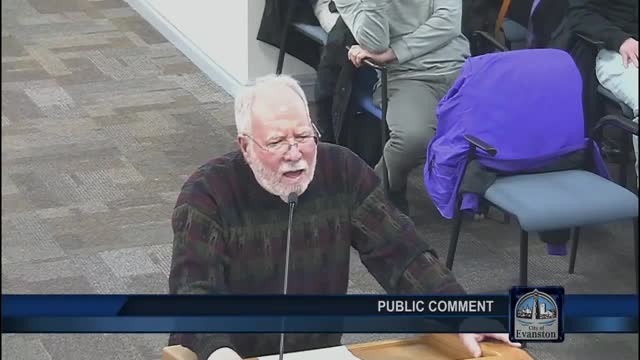Evanston community debates comprehensive plan to address affordable housing crisis
January 11, 2025 | Evanston, Cook County, Illinois
Thanks to Scribe from Workplace AI , all articles about Illinois are free for you to enjoy throughout 2025!

This article was created by AI using a video recording of the meeting. It summarizes the key points discussed, but for full details and context, please refer to the video of the full meeting. Link to Full Meeting
A significant point of contention arose from the perspectives of single-family homeowners who expressed fears that the introduction of multifamily housing could undermine their property values and alter the character of their neighborhoods. One resident articulated a willingness to contribute to the development of affordable housing but firmly opposed any zoning changes that would disrupt the existing single-family home landscape. This sentiment reflects a broader anxiety among homeowners about the potential impacts of increased density in their communities.
Conversely, voices advocating for the comprehensive plan emphasized the urgent need for affordable housing options in Evanston. Pastor Luke Harris Ferry, a local renter, passionately argued that the current piecemeal approach to zoning has disproportionately benefited privileged residents while neglecting the needs of vulnerable populations. He underscored the moral imperative of ensuring access to safe and affordable housing for all residents, regardless of their socioeconomic status. His remarks highlighted the pressing nature of the housing crisis, calling for immediate action rather than further delays.
Statistics presented during the meeting painted a stark picture of housing affordability in Evanston. A local realtor noted that the median price for single-family homes has soared to $722,000, making homeownership increasingly unattainable for many, particularly for Black families whose median income is significantly lower. This disparity raises concerns about the city’s commitment to diversity and inclusivity, as the demographic makeup of Evanston continues to shift in response to housing costs.
Supporters of the comprehensive plan, including real estate professionals, argued that legalizing four-unit buildings across residential zones is a crucial step toward increasing the supply of affordable housing. They suggested that modifying existing housing ordinances to require a percentage of units in new developments to be set aside for moderate-income households could further enhance affordability.
In conclusion, the discussions at the Land Use Commission meeting reflect a community at a crossroads, grappling with the balance between preserving neighborhood character and addressing the urgent need for affordable housing. As the city moves forward with the comprehensive plan, the challenge will be to navigate these competing interests while fostering a more inclusive and diverse Evanston. The next steps will involve continued dialogue among stakeholders and the potential for policy changes that prioritize housing accessibility for all residents.
Converted from Land Use Commission Meeting 1-8-2025 meeting on January 11, 2025
Link to Full Meeting
Comments
View full meeting
This article is based on a recent meeting—watch the full video and explore the complete transcript for deeper insights into the discussion.
View full meeting